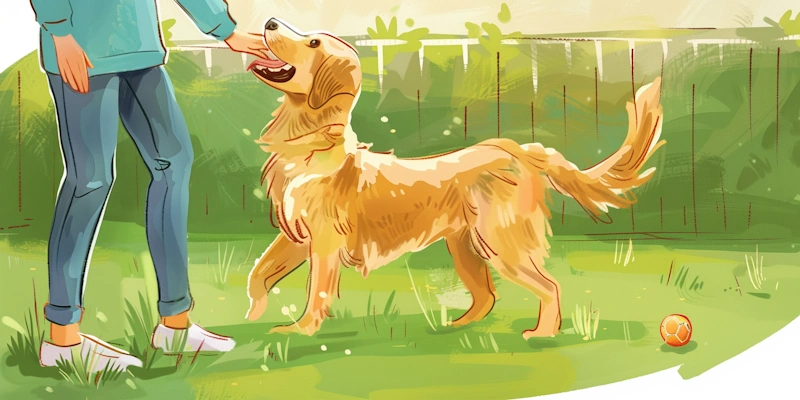Effective communication with your dog is crucial for a strong bond and a harmonious relationship. Understanding how to communicate better with your dog ensures they understand your commands and feelings. This blog will guide you through essential tips for improving your communication skills with your furry friend.
Understanding Canine Body Language

Dogs communicate primarily through body language. Learning to read your dog's signals helps you respond appropriately. For instance, a wagging tail often indicates happiness, while a tucked tail signals fear or anxiety. Observing ear positions and facial expressions also provides insight into your dog's emotions. Read more about body language of the dogs.
Using Clear Verbal Commands
Consistency in verbal commands is essential for effective communication. Use simple, clear words for commands like "sit," "stay," and "come." Avoid using multiple words for the same command to prevent confusion. Repetition and consistency help your dog understand and follow instructions better. Read about the basics of verbal commands.
Positive Reinforcement Techniques

Positive reinforcement strengthens your dog's understanding of desired behaviors. Reward your dog with treats, praise, or playtime when they follow commands correctly. This approach encourages repeat behaviors and builds a positive association with following instructions. Here are 5 Homemade Treats Your Dog Will Love!
Establishing Eye Contact
Establishing eye contact enhances your communication with your dog. Dogs are more likely to focus and respond when they see your eyes. However, avoid prolonged eye contact, as it can be perceived as a threat. Use gentle, brief eye contact to reinforce your bond.
Consistency in Training
Consistency is key to effective communication and training. Ensure all family members use the same commands and techniques. Inconsistent training can confuse your dog and hinder their learning process. Set clear rules and stick to them.
Understanding Vocal Tones
Your vocal tone significantly impacts how your dog interprets your commands. Use a calm, firm tone for commands and a cheerful, high-pitched tone for praise. Avoid yelling or using harsh tones, as they can cause fear and anxiety in your dog.
Non-Verbal Cues
Incorporate non-verbal cues into your communication strategy. Hand signals and gestures help reinforce verbal commands. Dogs often respond well to visual cues, making training more effective. Combine hand signals with verbal commands for better results.
Socializing Your Dog

Socializing your dog improves their communication skills. Expose them to various environments, people, and other animals. Socialization helps your dog understand different social cues and reduces anxiety in new situations. A well-socialized dog communicates better and behaves more appropriately.
Regular Exercise and Play

Regular exercise and playtime enhance your dog's mental and physical well-being. Engaging in interactive play strengthens your bond and improves communication. Activities like fetch, agility training, and obedience exercises are excellent ways to interact and communicate with your dog.
Understanding Your Dog's Limits
Recognize and respect your dog's limits. Every dog has a different threshold for training and interaction. Pushing your dog too hard can lead to frustration and miscommunication. Be patient and give your dog time to understand and respond to your commands.
Conclusion
Learning how to communicate better with your dog is essential for a strong, harmonious relationship. Understanding canine body language, using clear verbal commands, and employing positive reinforcement techniques are key strategies. Consistency in training, understanding vocal tones, and incorporating non-verbal cues further enhance communication.